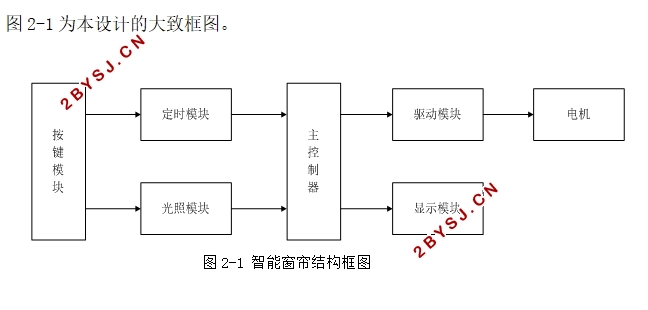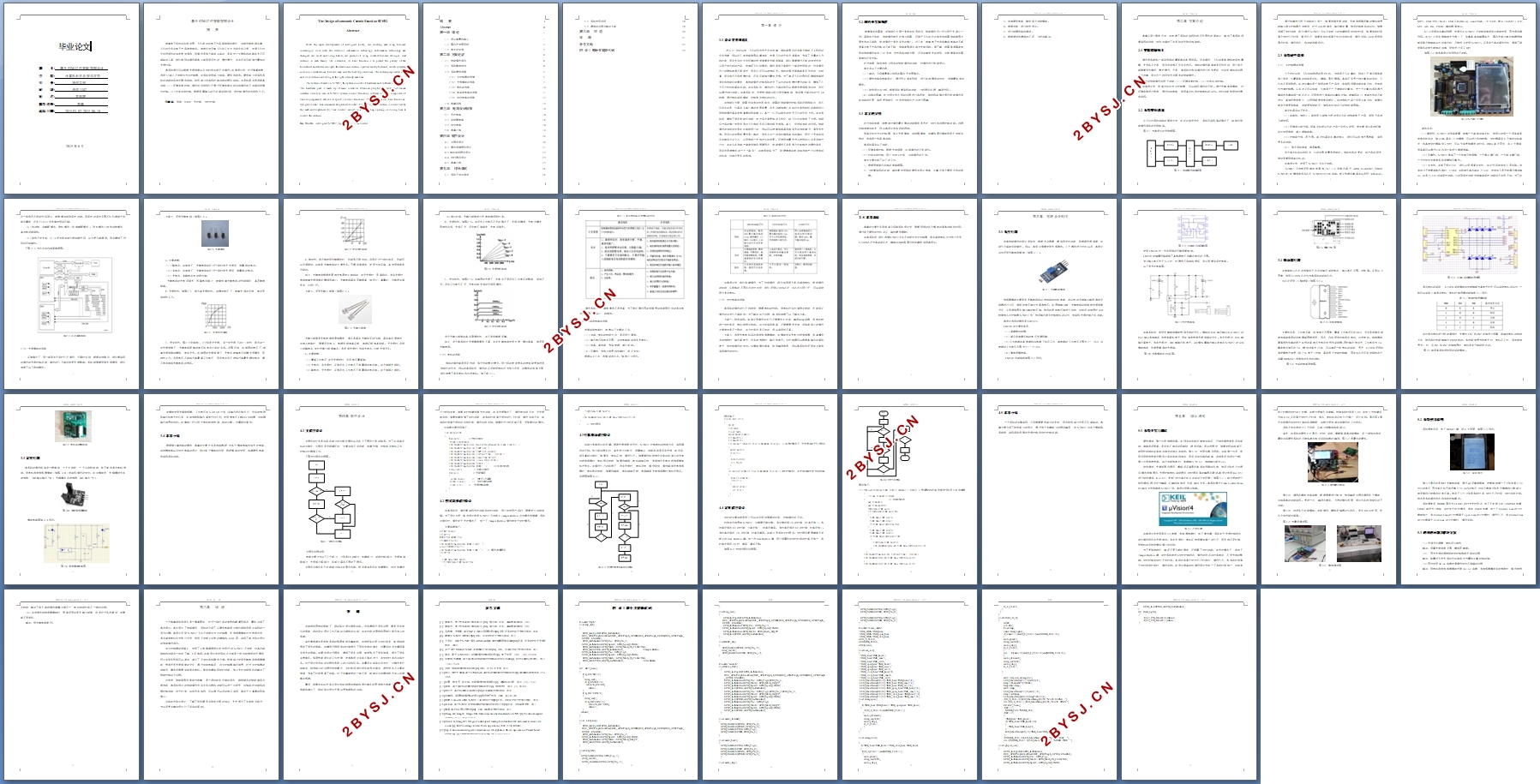基于STM32的智能窗帘设计
无需注册登录,支付后按照提示操作即可获取该资料.
基于STM32的智能窗帘设计(任务书,开题报告,外文翻译,论文11200字,周进度表,答辩记录表)
摘 要
随着电子科技的迅速发展,人们身边的电子产品越来越多样化,功能也越来越丰富,人们的生活与电子产品息息相关。信息化改变着人们的工作方式和生活习惯,使得人们对生活舒适性的追求愈发强烈,而窗帘是每个家庭必备的,是保护户主隐私和遮蔽阳光不可或缺的工具,我们常用的窗帘基本上都是用手拉的,费时费力,并且还有可能错过最佳的光照时间。
本系统提出可以根据光照强度以及定时来自动开关窗帘。在本设计中,经过慎重考虑,选用STM32开发板作为主控制器,该系统由两部分组成:硬件和软件。硬件部分由实现系统的功能的各种元器件组成;软件部分由实现控制功能的程序组成。该系统具有两项基本功能:(1)环境亮度控制:窗帘的关闭和打开通过环境亮度自动完成窗帘的开启或关闭操作控制。(2)时间自动控制:根据设置输入的开启或关闭时间,来控制窗帘的关闭和打开。
关键词:智能 STM32 光控制 定时控制
The Design of Automatic Curtain Based on STM32
Abstract
With the rapid development of intelligent society, our working and living becomes increasingly close with the electronic information technology. Information technology has changed our work and living habits, our pursuit of living comfort becomes stronger. And curtains in each family life is essential, its basic function is to protect the privacy of the household and shelter sunlight, the traditional curtain is pulled mostly by hand, switch everyday not only is cumbersome, but also may miss the best exposure time. The system proposed to open and close curtains according to the light intensity and time.
The system is based on STM32, the system consists of hardware and software components. The hardware part is made up of main controller extension peripheral circuits and various interface circuits to realize STM32 system control functions, software is mainly composed of various programs to achieve its specific control functions. The system has two basic functions: (Ⅰ)Light control: Environmental Brightness Control: Close or open the curtain is controlled by the ambient brightness.(Ⅱ) Time control: according to the setting opening or closing time to control the curtains.
Key Words : intelligent; STM32; Light control; Time control


目录
摘 要 I
Abstract II
第一章 绪 论 1
1.1 设计背景和意义 1
1.2 国内外发展现状 2
1.3 本文的安排 2
第二章 方案论证 4
2.1 智能窗帘项目 4
2.2 系统整体规划 4
2.3 系统硬件选择 5
2.3.1 主控制器的选择 5
2.3.2 光感模块的选取 7
2.3.3 电机的选取 10
2.3.4 电驱动电路的选取 11
2.3.5 定位电路的选取 12
2.4 本章总结 13
第三章 电路设计制作 14
3.1 光控电路 14
3.2 驱动器电路 16
3.3 定位电路 18
3.4 本章小结 19
第四章 软件设计 20
4.1 主程序设计 20
4.2 模式选择程序设计 21
4.3电机驱动程序设计 22
4.4 定时程序设计 23
4.5 本章小结 25
第五章 综合调试 26
5.1 系统开发与测试 26
5.2 系统使用说明 28
5.3 遇到的问题及解决方案 28
第六章 结 语 30
致 谢 31
参考文献 32
附 录1 部分关键源代码 33
